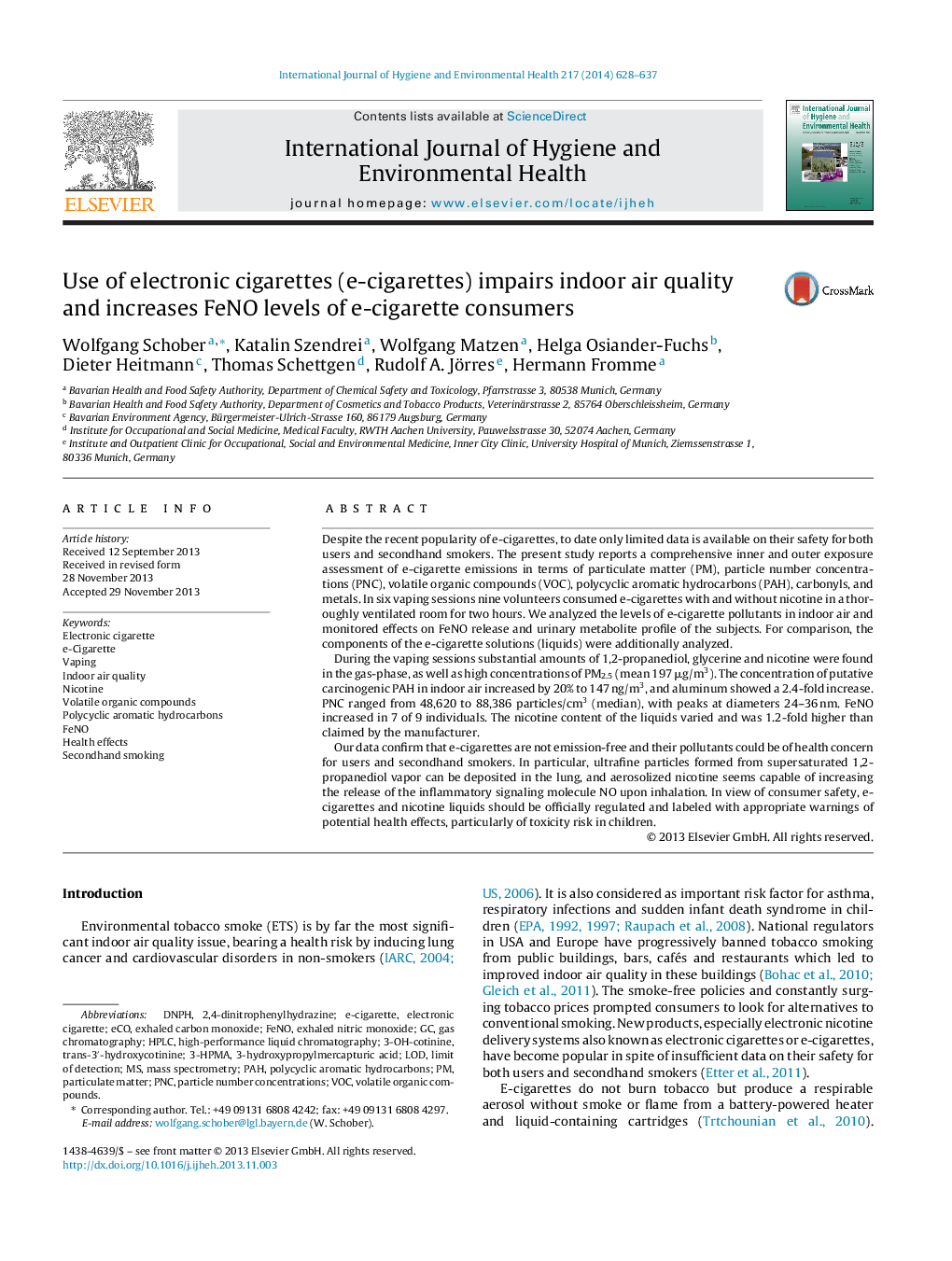| کد مقاله | کد نشریه | سال انتشار | مقاله انگلیسی | نسخه تمام متن |
|---|---|---|---|---|
| 2588483 | 1561896 | 2014 | 10 صفحه PDF | دانلود رایگان |
Despite the recent popularity of e-cigarettes, to date only limited data is available on their safety for both users and secondhand smokers. The present study reports a comprehensive inner and outer exposure assessment of e-cigarette emissions in terms of particulate matter (PM), particle number concentrations (PNC), volatile organic compounds (VOC), polycyclic aromatic hydrocarbons (PAH), carbonyls, and metals. In six vaping sessions nine volunteers consumed e-cigarettes with and without nicotine in a thoroughly ventilated room for two hours. We analyzed the levels of e-cigarette pollutants in indoor air and monitored effects on FeNO release and urinary metabolite profile of the subjects. For comparison, the components of the e-cigarette solutions (liquids) were additionally analyzed.During the vaping sessions substantial amounts of 1,2-propanediol, glycerine and nicotine were found in the gas-phase, as well as high concentrations of PM2.5 (mean 197 μg/m3). The concentration of putative carcinogenic PAH in indoor air increased by 20% to 147 ng/m3, and aluminum showed a 2.4-fold increase. PNC ranged from 48,620 to 88,386 particles/cm3 (median), with peaks at diameters 24–36 nm. FeNO increased in 7 of 9 individuals. The nicotine content of the liquids varied and was 1.2-fold higher than claimed by the manufacturer.Our data confirm that e-cigarettes are not emission-free and their pollutants could be of health concern for users and secondhand smokers. In particular, ultrafine particles formed from supersaturated 1,2-propanediol vapor can be deposited in the lung, and aerosolized nicotine seems capable of increasing the release of the inflammatory signaling molecule NO upon inhalation. In view of consumer safety, e-cigarettes and nicotine liquids should be officially regulated and labeled with appropriate warnings of potential health effects, particularly of toxicity risk in children.
Journal: International Journal of Hygiene and Environmental Health - Volume 217, Issue 6, July 2014, Pages 628–637
